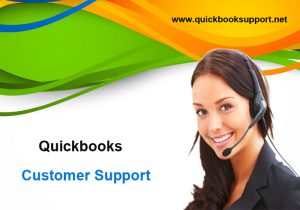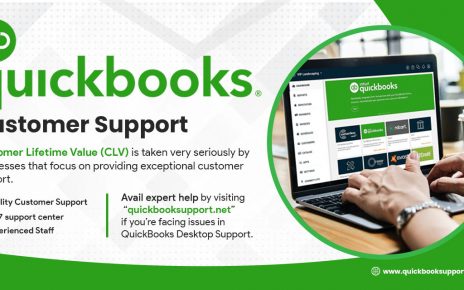In this article you learn about tracking job costs in QuickBooks Desktop. To know more, contact QuickBooks Customer Care.
Tracking the expenses for a job and comparing those expenses to your revenue is known as Job Costing. You can see how much money you spend and make for each job with the help of QuickBooks Desktop’s job costing tools.
To make sure that you have an accurate record of your job costs follow the steps given below.
Ensure that you are setting up each item with enough information. The preciseness of your job cost reports is determined by the level of detail in your Item List. Read the article further to know how to add, edit and delete items in QuickBooks Desktop.
Step 1: Setting up a Customer: Job for each job
Set up an individual job for that customer even if you have only one job for a particular customer. This can simplify your bookkeeping if you add another job for that customer in the future and also helps you in keeping a track of your income and expenses on a job-by-job basis.
Step 2: Assigning all your expenses to jobs
Make sure you assign all your expenses to jobs to get a complete job cost picture. Whenever you enter a bill, check, or time-sheet, select the appropriate job in the Customer:Job column
In case of billable time: Using either a weekly timesheet or a single activity entry record the hours spent on the job. To the customer or job, assign hours. In the Billable column on the form, each entry will automatically be checked. Please Note: Timesheets can also be called non-posting entry.
In case of job-related purchases: To record the purchase, use a bill, check, or credit card charge. Enter each item or service you purchased on the Items tab. Make sure you assign each item or service to the customer or job in the Customer:Job column.
In case of overhead expenses: Here’s how to calculate and track overhead costs if you wish to allocate overhead expenses to specific jobs. Before making any changes in your company file speak to your accountant.
In case of mileage: Record the mileage In the Enter Vehicle Mileage window, record the mileage. You can change the amount for this expense on the invoice if you wish to.
In case of other expenses: To record the expenses use a bill, check, or credit card charge. Enter each expense on the Expenses tab. Make sure you assign each expense to the customer or job in the Customer:Job column.
Step 3: Entering your estimates in QuickBooks Desktop
Estimates can be created in or outside of QuickBooks. You can just record summary estimates into QuickBooks if you prefer to create estimates with a spreadsheet or outside the program.
Without recording estimates in QuickBooks Desktop you can use some job costing reports. Using the full range of Job Cost reports and make sure your project budget is on track can be done by entering estimates in QuickBooks . Also, it lets you evaluate the accurate estimates and adjust them appropriately for future projects.
Step 4: Creating appropriate invoices
Ensure that you choose the right Customer:Job while creating invoices.
Ensure that you enter at least a summary of each invoice into the program so the revenue is included in the Job Profitability reports if you prefer to create invoices outside QuickBooks Desktop. Read further to know how to create an invoice.

Step 5: Running a job costing report to determine how your business is doing on a job-by-job basis
To identify which job is profitable and which is not, using Job Reports. Analyze how well each job is progressing financially and identify problem jobs before it’s too late to be saved as it helps in creating better estimates.
Follow the steps to access various job reports:
In the Reports menu, select Jobs, Time, & Mileage.
In the Reports menu, select Industry Specific and then click on Contractor Reports.
Contact QuickBooks Customer Care to learn more about reports in QuickBooks.
Calculating and Tracking Overhead Expenses in QuickBooks Desktop
Costs and expenses that are not directly related to creating products or services occur during the course of business though; they must still be paid on an ongoing basis. Such costs are known as “overhead costs” and are very important for determining the appropriate costs of goods or services so that your small business can turn a profit. It also helps in budgeting correctly and tracking finances.
Types of Overhead Costs
For making up the total cost to run a business, overhead costs are a key component. They are made up of ongoing costs, the costs that must be paid regardless of the company’s current business. Direct labor costs, direct costs (like raw materials) are not overhead costs. Some of the common overhead costs and overhead expenses are- Rent and Utilities, Repairs and Maintenance, Insurance, Office Supplies, Accounting, Taxes, and Human Resources (It includes salaries for administrative employees )
Overhead costs must be paid regardless of the company’s revenue. To split overhead costs into two different sub-categories organizations find it helpful and sometimes necessary such as manufacturing and administrative costs. Replete with machinery, splitting these expenses could be helpful if the business manages a separate manufacturing facility. It allows the organization to allocate manufacturing costs to works-in-progress or finished products (this is one of the major benefit of tracking overhead expenses).
It is possible for the business to conduct a more thorough examination of its profitability by separating manufacturing overhead from other types of overhead costs. In many ways, without significant changes to the business’ infrastructure administrative overhead costs cannot be adjusted. If a more thorough understanding of the costs is measured against the direct labor and material costs manufacturing overhead, however, might be adjustable.
Why is tracking Overhead Costs important
By properly defining and categorizing overhead costs you can track accurately. Tracking is typically achieved through “cost accounting.” Is the cost in question a fixed cost? is the most important question that arises and the accounting officials want to know.
An overhead cost doesn’t have to do anything with the company revenue and should not fluctuate. Rent, salaries and depreciation remain same from month to month and are examples of overhead costs that remain the same throughout. Utility is the fixed cost that might reflect a marginal monthly change. These costs can easily be affected by seasonality (e.g. air conditioning use in the summer, running with a skeleton staff over the holidays). Seasonality should not affect your expenses, though it should be nominal and should not really affect the calculations of accounting.
To ask if the cost is directly related to producing a good or service is another way to properly categorize overhead costs. Any cost which cannot be categorized in the similar manner is an indirect cost and as a result it should be classified as an overhead expense. You get your overhead rate while dividing indirect costs by allocation measure. By dividing total overhead costs by the number of direct labor hours overhead allocation rate can be determined.
Why is Calculating Overhead Costs Important?
You can figure out your business’ overhead percentage as a percentage of sales once all costs are properly classified. By adding up all overhead costs and then breaking them down by month, and then again dividing that total by monthly sales, this is how overhead costs calculated.
In relation to labor cost, it is beneficial to calculate overhead percentage. In such cases the monthly overhead costs are divided by the monthly labor costs after which they are multiplied by 100.
The more effective a business is at utilizing its resources the lower is percentage in all the cases.
Including calculations such as profitability and overhead percentage a business’ worth can be measured. Small business owners can accurately measure their business expenditures and find the true efficiency of the business they are running and its profit margin by accurately tracking costs and revenue
Overhead costs can be related directly to equipment purchases and financing. Check out our list of pros and cons before you go any further if you’re considering the option of leasing your equipment.
To know more on how to track cost and Overhead costs and expenses in QuickBooks desktop, call on our QuickBooks customer care number. You can also write to us at support@quickbooksupport.net. For more information visit – www.quickbooksupport.net.

Comments are closed.